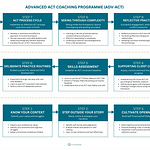Self-as-context is the observing self — the stable perspective from which experiences are noticed. Its opposite, self-as-content, occurs when identity becomes entangled with stories, labels, or evaluations (e.g., “I’m broken,” “I’m not good enough”).
In therapy, this process helps clients realise that they (I) are more than their thoughts, feelings, or past experiences. They are the context in which experiences come and go. This distinction can be liberating, especially for those whose self-stories are heavy, controlling and dominant.
Exercises like “the chessboard metaphor” or noticing how many different experiences have come and gone while the observer remains constant, help clients connect with this deeper sense of self. From this space, it’s easier to hold painful content lightly and act in line with chosen values.





